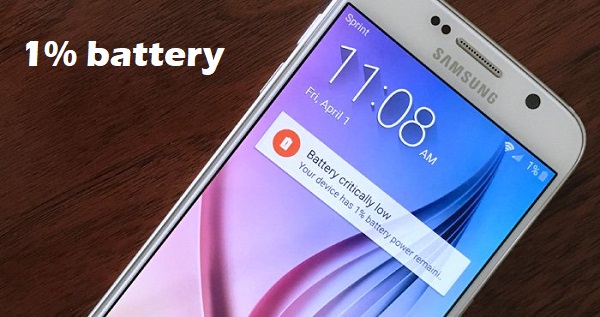It may come as a surprise to many people, but in reality your phone doesn’t actually know how much charge is left in the battery. There’s nothing analyzing the chemistry inside the battery and reporting back to the phone. Instead all the phone (including any electronics built into the battery) can do is make an estimate based on what it sees at the battery terminals over time. So for example it might keep a tally of how much charge it has used since the battery was last fully charged, and subtract this from a figure for the latest battery capacity. But then this latest capacity figure is also just an estimate based on previous usage.
A simple explanation of why 1% might last a long time is that the phone has underestimated the current battery capacity. Then when it gets down to what it thinks should be almost empty, displaying 1%, it finds that the battery has more capacity left than it estimated. That is before the battery actually reaches its minimum output voltage, indicating it’s really empty. In fact the algorithm designers know that it’s better to do this than over-estimate capacity and have the battery run out unexpectedly, so the tendency is to err on the pessimistic side, any unexpected capacity then being a bonus.
In practice the algorithms used for estimation of usage and current capacity are complex and vary between models and battery manufacturers, but you get the idea. Often you can help improve the estimate at least temporarily by allowing the phone to re-calibrate the algorithm using a full discharge/recharge cycle. Even then this assumes that the battery is still operating normally, and once the battery gets towards end of life then charge varies in a way that the algorithms don’t anticipate and so the percentage displayed can then be a long way out whatever happens.
Is there really only 1% left or is it used to threaten you into charging?
A simple explanation of why 1% might last a long time is that the phone has underestimated the current battery capacity. Then when it gets down to what it thinks should be almost empty, displaying 1%, it finds that the battery has more capacity left than it estimated. That is before the battery actually reaches its minimum output voltage, indicating it’s really empty. In fact the algorithm designers know that it’s better to do this than over-estimate capacity and have the battery run out unexpectedly, so the tendency is to err on the pessimistic side, any unexpected capacity then being a bonus.
In practice the algorithms used for estimation of usage and current capacity are complex and vary between models and battery manufacturers, but you get the idea. Often you can help improve the estimate at least temporarily by allowing the phone to re-calibrate the algorithm using a full discharge/recharge cycle. Even then this assumes that the battery is still operating normally, and once the battery gets towards end of life then charge varies in a way that the algorithms don’t anticipate and so the percentage displayed can then be a long way out whatever happens.

Just like how blockbench android optimizes performance for smoother experience, a phone with 1% battery might prioritize essential tasks to extend its life. It's all about managing resources efficiently!
ReplyDeletePost a Comment